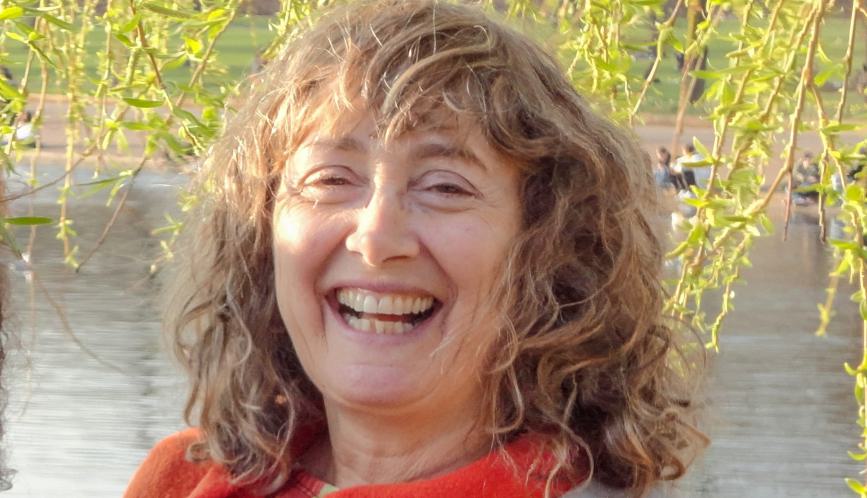FI network member Shoshana Grossbard is Professor of Economics, Emerita at San Diego State University. Her research interests include labor economics, economics of the family, economics of gender, and law and economics. She is also a research fellow at the IZA Institute in Bonn, Germany, at CESifo in Munich, Germany, and at the Global Labor Organization in Maastricht, the Netherlands. Grossbard is founding and current editor of the Review of Economics of the Household published by Springer/Nature and President and Founder of the Society of Economics of the Household (SEHO).
Describe your area of study and how it relates to current policy discussions surrounding inequality.
I model intra-household interactions between spouses, viewing them as individual producers and/or consumers of goods and services. This approach is rooted in the modern household economics pioneered by Gary Becker and Jacob Mincer, but in contrast to their unitary view of the household I assume that spouses or partners potentially keep track of their own income and make internal financial transfers within the household. My theory of allocation of time in markets for labor and marriage integrates household production and marriage market analysis and helps understand earnings, fertility choices, consumption and investments in children. Recently I have been studying implications of this approach for inequality with Lucia Mangiavacchi, Luca Piccoli, and William Nilsson. We explore how spouses’ income association, fertility choices and individual labor supply contribute to the upsurge of income inequality in the US. I have examined gaps in earnings and time use by gender, race and religion, with implications for inequality. Econometric models based on my theory currently being developed have the advantage of including couples who opted for a corner solution, and only one member is in the labor force. In contrast, applications of other non-unitary models typically assume that couples have two earners.
Inequality at the macro level is very influenced by the presence of single-parent families, typically composed of a mother and her children. Poverty and deprivation levels are typically higher for children of single mothers. A number of my studies have shed light on how institutions related to marriage and divorce influence the share of children born to a single mom. Olivia Ekert-Jaffe and I have studied how out-of-couple births vary with community property and alternative property division schemes in case of separation. Victoria Vernon and I have found that teen births are a function of whether a state has Common Law Marriage or not. Frequency of single motherhood also varies with women’s control over their property and their earnings, as I showed in a joint article with Richard Geddes and Hazem Alshaikhmubarak. When addressing inequality at a global level it is especially important to pay attention to the marriage-related institutions that may exacerbate country-level inequality by pushing more women into single parenthood.
What areas in the study of inequality are most in need of new research?
We need a better understanding of the determinants of human capital investments in young children, a topic emphasized by both Jacob Mincer and J.J. Heckman. Most of these investments are provided by parents. By having a better understanding of the motives behind parental investments in their children’s human capital we as a society can possibly contribute to an increase in adults’ capabilities and to a decrease in income inequality.
In turn, to better understand what motivates mothers and fathers we have to pay more attention to institutions regulating marriage and divorce. These institutions, including laws and government legislation, influence parental incentives. In particular, it is necessary to better understand how government activities affect willingness to work in parenting activities and willingness to pay the parent who engages in more parenting work.
Two other areas deserving more attention on the part of researchers are eldercare and domestic violence. Who will care for the armies of elderly who have not saved much and are likely to have higher life expectancy than earlier generations? Not all help can come from governments, which implies more tapping of caring work by family members. Back to production in the household and the type of models I recently published in Review of Economic Development. As for domestic violence (where spouses are the victims) and violent child abuse, we need more data. These forms of violence are especially widespread in the developing countries, but they are also excessively common in the USA. Violence in households can have enormous repercussions that need to be researched more intensively. They affect many other outcomes, including a number of channels leading to inequality.
What advice do you have for emerging scholars in your field?
Stick to your guns. Specializing in fields like household economics, economics of the family or economics of marriage may not open as many doors as some other kind of specialty. However, if you are passionate about your topic and you work hard, you may eventually succeed. Your enthusiasm may overcome barriers of all kinds, including the narrowmindedness of many gatekeepers in academic economics. Of course passion is not enough, you also need to acquire all the needed skills in econometrics and other modeling. Make sure you keep learning the latest techniques and the important models. Also keep your eyes open for innovative data.



